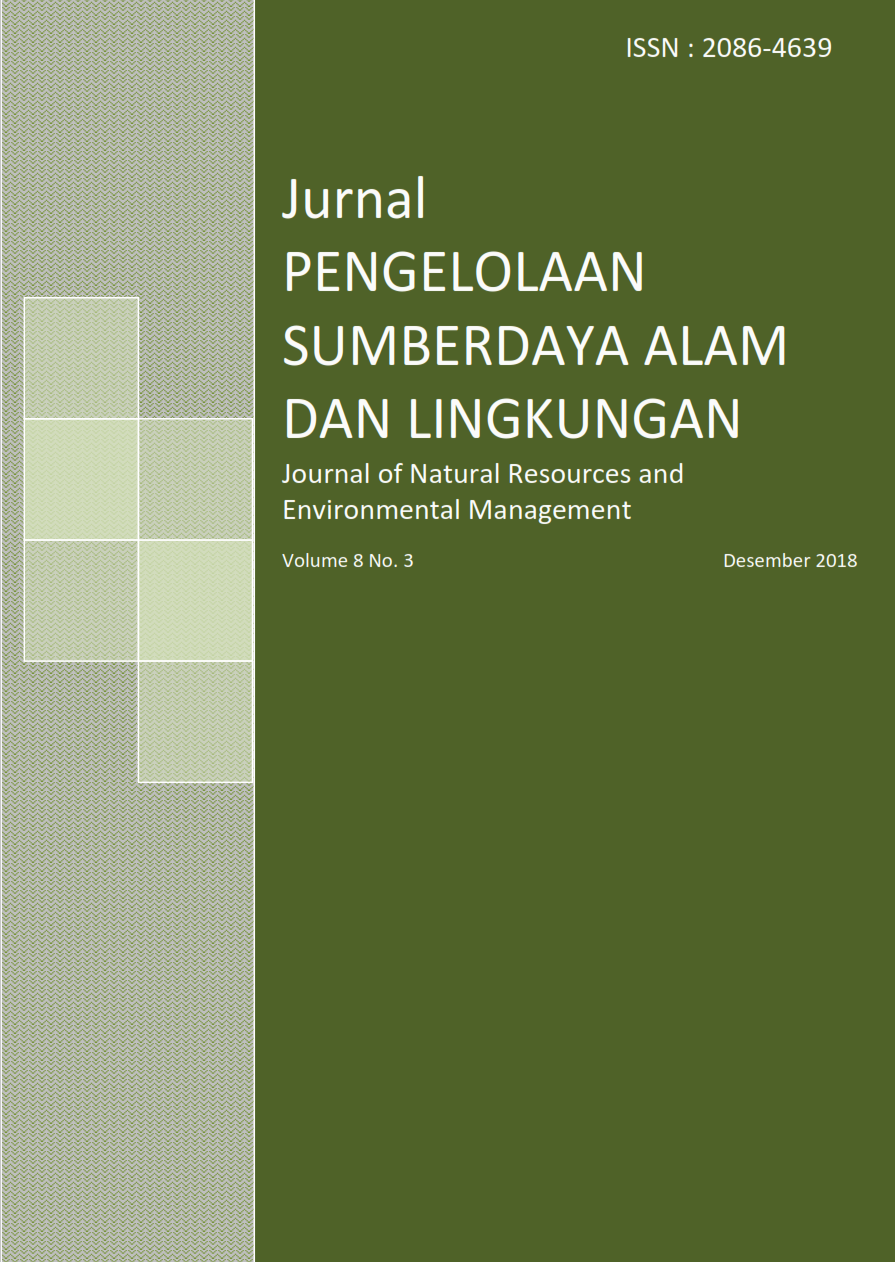Analysis of Soil Erosion Hazardous Level In Jatipurno Sub-District Of Wonogiri District
Abstract
References
Ali, S. A. and Hagos, H., 2016. Estimation of soil erosion using USLE and GIS in Awassa Catchment, Rift valley, Central Ethiopia, Geoderma Regional. Elsevier B.V., 7(2), pp. 159–166. doi: 10.1016/j.geodrs.2016.03.005.
Aplikasi Model Teknik Sipil Dan Vegetatif Dalam Rangka Penyusunan Rencana Konservasi Desa, 2016. https://sasaqgagah14.wordpress.com/2016/03/24/aplikasi-model-teknis-sipil-dan-vegetatif-dalam-rangka-penyusunan-rencana-konservasi-desa/ (21 August 2017).
Arga, Y., 2011. Peta dan Pertanian : Pengelolaan Lahan Pertanian. http://yuanarga.blogspot.co.id/2011/04/pengelolaan-lahan-pertanian.html (21 August 2017).
Asdak, C., 2007. Hidrologi dan Pengelolaan Daerah Aliran Sungai. Gadjah Mada University Press, Yogyakarta.
Badan Pusat Statistik Kabupaten Wonogiri, 2015. Kecamatan Jatipurno Dalam Angka 2015. BPS, Wonogiri.
Bakosurtanal, 2000. Peta Rupa Bumi Digital Indonesia 1508-131 Skala 1:25.000. Bogor.
Belasri, A. dan Lakhouili, A., 2016. Estimation of Soil Erosion Risk Using the Universal Soil Loss Equation (USLE) and Geo-Information Technology in Oued El. Journal of Geographic Information System 8, pp. 98–107.
BPDAS, 2016. Data Curah Hujan DAS Bengawan Solo. Sukoharjo.
Budiyanto, G., 2014. Pengelolaan Lahan Kering, Sebuah Model Pertanian Konservasi Di Kawasan Hulu DAS Jratunseluna Jawa Tengah. Yogyakarta. http://repository.umy.ac.id/bitstream/handle/123456789/1819/LAHAN KERING.pdf?sequence=1&isAllowed=y (21 August 2017).
Dabral, P. P. et al., 2008. Soil erosion assessment in a hilly catchment of North Eastern India using USLE, GIS and remote sensing. Water Resources Management 22(12), pp. 1783–1798. doi: 10.1007/s11269-008-9253-9.
Departemen Kehutanan, 2009. Tata Cara Penyusunan Rencana Teknik Rehabilitasi Hutan dan Lahan Daerah Aliran Sungai (RTk RHL-DAS)’, Peraturan Menteri Kehutanan Republik Indonesia Nomor P.32/Menhut-II/2009.
ESRI, 2000. Spatial Analyst. Environmental System Research Institut (ESRI) Inc. USA, Redlands California.
Hrabalíková, M. dan Janeček, M., 2016. Comparison of different approaches to LS factor calculations based on a measured soil loss under simulated rainfall. Soil and Water Research, pp. 1–9. doi: 10.17221/222/2015-SWR.
JICA, 2007. Studi Penanganan Sedimentasi Waduk Serbaguna Woogiri Republik Indonesia. Jakarta.
Kusmawati, T. et al., 2012. Prediksi Erosi dan Perencanaan Konservasi Tanah dan Air pada Daerah Aliran Sungai Saba. Agroekoteknologi Tropika 1(1), pp. 12–23.
Leh, M. et al., 2011. Impact of Land Use Change on Erosion Risk: An Integrated Remote Sensing, Geographic Information System and Modeling Methodology. Land Degradation & Development, pp. 1-13. doi: 10.1002/ldr.1137.
Mawardi, I., 2010. Kerusakan daerah aliran sungai dan penurunan daya dukung sumberdaya air di pulau jawa serta upaya penanganannya. Jurnal Hidrosfir Indonesia 5(2), pp. 1–11.
Pratama, A., 2015. Tingkat Kekritisan Lahan di Sub DAS Keduang Bagian Hulu, Wonogiri. Ilmu Tanah, Universits Gajah Mada.
Quinton, J. N. et al., 2010. The impact of agricultural soil erosion on biogeochemical cycling. Nature Geosci 3(5), pp. 311–314. doi: 10.1038/ngeo838.
Rahman, M. M. et al., 2012. Studi Penanganan Konservasi Lahan di Sub DAS Keduang, DAS Bengawan Solo, Kabupaten Wonogiri. Journal Teknik Pengairan 3(2), pp. 250–257.
Rahman, M. R. et al., 2009. Soil erosion hazard evaluation-An integrated use of remote sensing, GIS and statistical approaches with biophysical parameters towards management strategies. Ecological Modelling 220(13–14), pp. 1724–1734. doi: 10.1016/j.ecolmodel.2009.04.004.
Rusdi et al., 2013. Evaluasi Degradasi Lahan Diakibatkan Erosi Pada Areal Pertanian Di Kecamatan Lembah Seulawah Kabupaten Aceh Besar. Jurnal Konservasi Sumber Daya Lahan 1(1), pp. 24-39.
Sintala, A., 2010. Konservasi Tanah Dan Air. 2nd edn. IPB Press, Bogor.
Wuryanta, A. dan Susanti, P. D., 2015. Analisi Spasial Tekanan Penduduk Terhadap Lahan Pertanian Di Sub DAS Keduang, Kabupaten Wonogiri, (Spatial Analysis of Population Pressure on Agricultural Land in Keduang Sub Watershed, Wonogiri District, Central Java). Jurnal Penelitian Sosial dan Ekonomi Kehutanan 12(3), pp. 149–162.
Zuazo, V. dan Pleguezuelo, C., 2008. Review article Soil-erosion and runo ff prevention by plant covers . A review. Agronomy Journal 28, pp. 65–86. doi: 10.1051/agro:2007062.
Authors
Authors who publish with this journal agree to the following terms:
- Authors retain copyright and grant the journal right of first publication with the work simultaneously licensed under a Creative Commons Attribution License that allows others to share the work with an acknowledgement of the work's authorship and initial publication in this journal.
- Authors are able to enter into separate, additional contractual arrangements for the non-exclusive distribution of the journal's published version of the work (e.g., post it to an institutional repository or publish it in a book), with an acknowledgement of its initial publication in this journal.
- Authors are permitted and encouraged to post their work online (e.g., in institutional repositories or on their website) prior to and during the submission process, as it can lead to productive exchanges, as well as earlier and greater citation of published work (See The Effect of Open Access).






